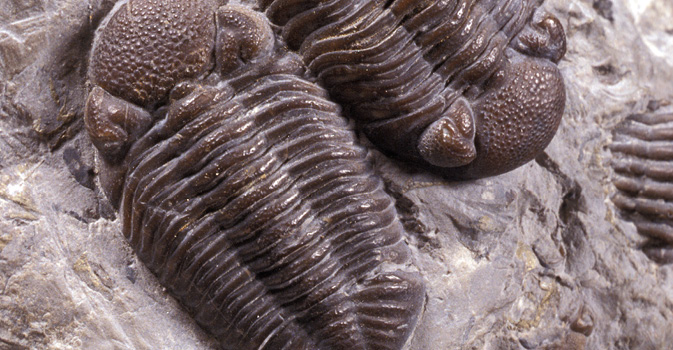
CMNH 2883, Phacops rana milleri Stewart, 1927
The Department of Invertebrate Paleontology collects, curates and studies fossil invertebrates. Its collection includes body fossils of animals such as sponges, bryozoans, corals, trilobites, crustaceans, insects, millipedes, brachiopods and mollusks, as well as trace fossils (ichnofossils) made by invertebrate animals.
With more than 90,100 individual cataloged specimens, the collection’s strength is Ohio fossils, but it also includes specimens from elsewhere in North America, and from Europe, Asia and South America.
Research in the department is multidisciplinary, focusing on study of fossil organisms, stratigraphy, cultural geology (the relationship of geology to human culture) and the history of geology. The department also has a decades-long record of participation in public outreach, including a popular series of walking tours and field trips related to its publication and research program.
The Department of Invertebrate Paleontology offers opportunities for those who are interested in an in-depth look at the discipline. Unpaid internships are offered for college students. Paid summer internships may be available through the
Kirtlandia Society. Kirtlandia Society interns are typically advanced undergraduates or students who have just graduated from college. The Invertebrate Paleontology lab also hosts University Circle Inc.
Future Connections high school students each summer. Cleveland Municipal School District students who are interested in geology are of particular interest to the department.
If you believe you have found a fossil and would like help identifying it, please
fill out this request form and we will get back to you as soon as possible.